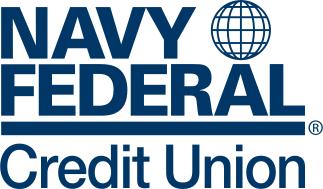Refinancing Federal Student Loans

While paying off federal student loans, some borrowers may consider refinancing to negotiate a lower interest rate. Refinancing a student loan is as intensive and detailed as securing a standard loan. There are many factors to consider to determine whether this is the right decision for you.
When considering your options to refinance, remember to compare interest rates, lender fees, and other details of the loan. Refinancing does not guarantee a lower rate or lower payment simply by refinancing the loan. Ask your lender to show you how much the loan will cost and how much your monthly payments will be, and compare them to your current payments and interest rate.
What follows is not financial advice and is for informational purposes only.
What Is Student Loan Refinancing?
Student loan refinancing is a serious decision that involves transferring current federal loans to a private loan through a private lender.
Under the right conditions, this may lower the interest rate currently being paid and consolidate multiple student loans into one easier-to-manage account.
However, student loan refinancing is not the best option for everyone. Refinancing may lead to a higher interest rate for those whose income is not consistent or whose credit score is not ideal. Also, by refinancing to a private institution, you will no longer be eligible for deferment or loan forgiveness and other federal relief programs.
Those who do not qualify for refinancing alone may qualify with a co-signer. Also, remember that once federal student loans are changed to private loans, the process cannot be reversed.
Registration is for CollegeRecon.
Sponsored by

Should I Refinance My Federal Student Debt?
If you meet the following criteria, refinancing a student loan may be beneficial to you:
- Your loans have a high interest rate
- Ineligibility for loan forgiveness programs
- Your current income and finances are stable
- You want to pay off loans faster
To be eligible for refinance loans, you need to meet eligibility requirements:
- Have graduated with an undergraduate or higher degree from a qualifying institution
- Have a good credit score
- Meet income requirements
- If other requirements are not met, have a cosigner
If you refinance your loans and qualify for a lower rate, more of your payments will go toward the principal instead of interest charges. You can also use this opportunity to shorten your repayment term and combine existing loans into one easier-to-manage loan.
If your loan is a Parent PLUS Loan, refinancing can allow you to transfer the balance to your child for their education. If you refinance to a private loan, you will no longer be eligible for income-driven repayment plans, deferments or student loan forgiveness.
You can use a student loan refinance calculator to determine how much you can save.
How to Refinance a Student Loan
After evaluating the pros and cons of student loan refinances, look into the application process. It involves the following steps:
- Checking your credit: The major credit agencies will check your credit. This should come up as a soft hit on your credit, but when you actually apply it will be directly
- Comparing lenders: You will need to evaluate loans and terms before accepting
- Applying for your refinance: Ensure you can provide the documentation needed such as income information, identification, and other requested data. You will apply directly through your chosen lender
Choosing a lender is an important step. Look into well-recognized institutions. Review online ratings to see if your experiences with the institution in question are positive. Review several so you have options. Review the plans and interest rates the institutions offer before making your decision.
Interest Rates
Once you have chosen your future lender, you must decide what type of interest rate you will accept: fixed rate or variable. A fixed interest rate will stay the same over the loan term and will not change, guaranteeing one stable rate. A variable rate will change, sometimes with little notice.
Sometimes it will be lower than the fixed rate being offered or only offered at a lower rate for a certain period. Other times the rate can rise higher than the fixed rate. There are no guaranteed rates with a variable rate past the introductory rate. Many prefer the stability of the fixed rate, but it is a personal choice.
Finally, complete the application with the lender. If you were asked to pre-qualify ahead of time, you will still need to fulfill the application requirements at this time.
Original Loan Details
You must provide loan verification and payoff information, proof of employment, residency, graduation, and a government-issued official ID. At this point in the process, the lender will do a hard credit check, which may affect your credit score. Then the lender will determine if you qualify if you qualify alone or only with a cosigner.
Refinancing Student Loans with a Co-signer
Sometimes, a potential private lender requires the cooperation of a cosigner. This can happen due to deficient credit or a lack of credit history. However, it is not a complete denial.
If you determine that you need a cosigner, you will have an easier time being approved and possibly achieve a lower interest rate.
A co-signer can be a family member, spouse, friend, or another close person to the applicant. The cosigner must be willing to take on the risks of the agreement. Their credit will be on the line if you miss payments and damage their credit.
Both parties will need income documentation to apply with a cosigner, and both will be subject to a credit check. This agreement will last the duration of the loan, which is a large responsibility for the cosigner.
After five years, the borrower may apply to carry the loan independently and relieve the cosigner if in good standing and with improved conditions.
Are There Alternatives to Refinancing?
Refinancing could be helpful under the right conditions if you have private student loans or private and federal loans. But you may want to consider debt consolidation or any of the federal government’s loan forgiveness or cancellation programs in addition to your refinance options.
If you’re unable to meet the minimum payments, these are just some of the programs for being forgiven all or a portion of your loan amount:
- Public Service Loan Forgiveness: For employees of federal, state, or local government organizations and certain non-profits
- Teacher Loan Forgiveness: For people who have taught full-time in a low-income school or education service agency for a minimum 5 consecutive years
- Perkins Loan Cancellation: For teachers serving low-income schools or children with disabilities. Also available to teachers of math, science, foreign languages, or other fields classified as having a shortage of qualified teachers
- Special Circumstances: Student debt may also be canceled in the event of disability, death, bankruptcy, school closure, withdrawal from school, or if the school falsely certified the student’s eligibility for the loans
Related: Military Spouse Scholarships
About the author

Kena Sosa
Kena Sosa is an award-winning author, filmmaker and percussionist. She earned her BA from OLLU and her MBEGT from SMU. She published two award-winning children’s books. Kena has written for CBS/DFW Local and Multicultural Review Magazine. She was the Guest Editor for the Fall/Winter 2023 ChildArt Magazine issue. Kena has written for Recon Media since 2023.

